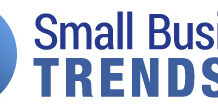Customer shops for school supplies while employee restocks shelves, Target store, Queens, New York.
Lindsey Nicholson | Universal Images Group | Getty Images
Now, as the central bank sets the stage for a sustained interest rate cut for the first time in years at its next meeting in September, consumers may also be expecting falling borrowing costs – and for some, this is already happening.
The federal funds rate, set by the Federal Reserve, is the interest rate at which banks borrow and lend money to each other overnight. Although it is not the rate consumers pay, the Fed's actions still affect the loan and savings rates they see on a daily basis.
“The first cut will not make a significant difference to people's wallets, but it will be the start of a series of rate cuts at the end of this year and next year,” House said.
This could, according to some experts, reduce the Fed's key interest rate from the current range of 5.25 to 5.50 percent to below 4 percent by the end of next year.
From credit cards and mortgage rates to auto loans and student loans, here's what your monthly interest expenses will look like as we approach the first rate cut.
Credit cards
Since most credit cards have a variable interest rate, there is a direct link to the Fed's benchmark. As the rate hike cycle progressed, the average credit card interest rate rose from 16.34% in March 2022 to over 20% today – approaching an all-time high.
At the same time, households are struggling to cover high living costs, so credit card balances are also rising and more and more cardholders are carrying debt from month to month or falling behind on their payments.
A recent report from the Federal Reserve Bank of Philadelphia showed record levels of credit card delinquencies, based on data dating back to 2012. Revolving debt also hit a new high, even as banks reported tighter lending standards and a decline in new credit card issuance.
For those paying 20 percent or more interest on a revolving loan, annual percentage rates will fall when the Fed cuts rates. But even then, they will only go down at extremely high levels and provide little relief, says Greg McBride, chief financial analyst at Bankrate.com.
“Interest rates are not going to fall fast enough to get you out of a bad situation,” McBride said.
For people with credit card debt, the best thing to do is to take matters into their own hands, advises Matt Schulz, chief credit analyst at LendingTree.
“They can do this by applying for a 0% balance transfer credit card or a low-interest personal loan, or by calling their card issuer and asking for a lower interest rate on the card,” he said. “This works more often than you think.”
Mortgage interest rates
While 15- and 30-year mortgage rates are fixed and largely tied to Treasury yields and the economy, they are also partially influenced by Fed policy. Mortgage rates have already started to decline, largely due to the prospect of a Fed-induced economic slowdown.
According to Bankrate, the average interest rate for a 30-year fixed-rate mortgage is currently below 7%.
“If we continue to get good news about things like inflation, [mortgage rates] could continue to trend lower,” said Jacob Channel, senior economist at LendingTree. “We shouldn't expect gigantic declines in the immediate future, but we could see a return of interest rates to their 2024 lows in the coming weeks and months,” he said.
“If all goes really well, we could even end the year with an average interest rate on a 30-year fixed-rate mortgage closer to 6% than 6.5% or 7%.”
At first glance, that may not seem like much, Channel added, but “in the mortgage sector,” a decline of nearly 50 basis points is “nothing to turn your nose up at.” A basis point is one-hundredth of a percentage point.
Car loans
Car loans are fixed. However, the rates have become higher because interest rates on new loans are higher and car prices are rising. This has made monthly payments less and less affordable.
According to Bankrate, the average interest rate for a five-year new car loan is currently just under 8 percent.
However, “financing is a variable, and one of the smaller variables,” McBride said. For example, a quarter-percentage point reduction in interest on a five-year, $35,000 loan would mean $4 a month, he said.
Consumers would benefit more from improving their credit scores, which could pave the way to even more favorable loan terms, McBride said.
Student loans
Interest rates on federal student loans are also fixed, so most borrowers won't be directly affected by the Fed's actions. But students who took out direct federal student loans for the 2023-24 academic year will pay 5.50%, up from 4.99% in the 2022-23 academic year — and the interest rate on federal direct student loans for the 2024-2025 academic year is 6.53%, the highest rate in at least a decade.
Private student loans typically have a variable interest rate tied to the prime rate, a Treasury bill, or another interest rate index. This means borrowers are already paying higher interest. But how much more depends on the benchmark.
Savings interest
While the central bank has no direct influence on deposit rates, yields tend to correlate with changes in the target federal funds rate.
As a result, interest rates on the highest-yielding online savings accounts have changed significantly, now as high as 5.5 percent — well above the rate of inflation, which Bankrate's McBride says is a rare achievement for anyone building a financial cushion.
But those rates would fall once the central bank cuts its benchmark interest rate, he added. “If you've been thinking about a certificate of deposit, now is the time to secure it,” McBride said. “Those yields aren't going to get any better, so there's no benefit in waiting.”
Currently, a one-year high-yield CD yields more than 5.3%, making it as good as a high-yield savings account.

















